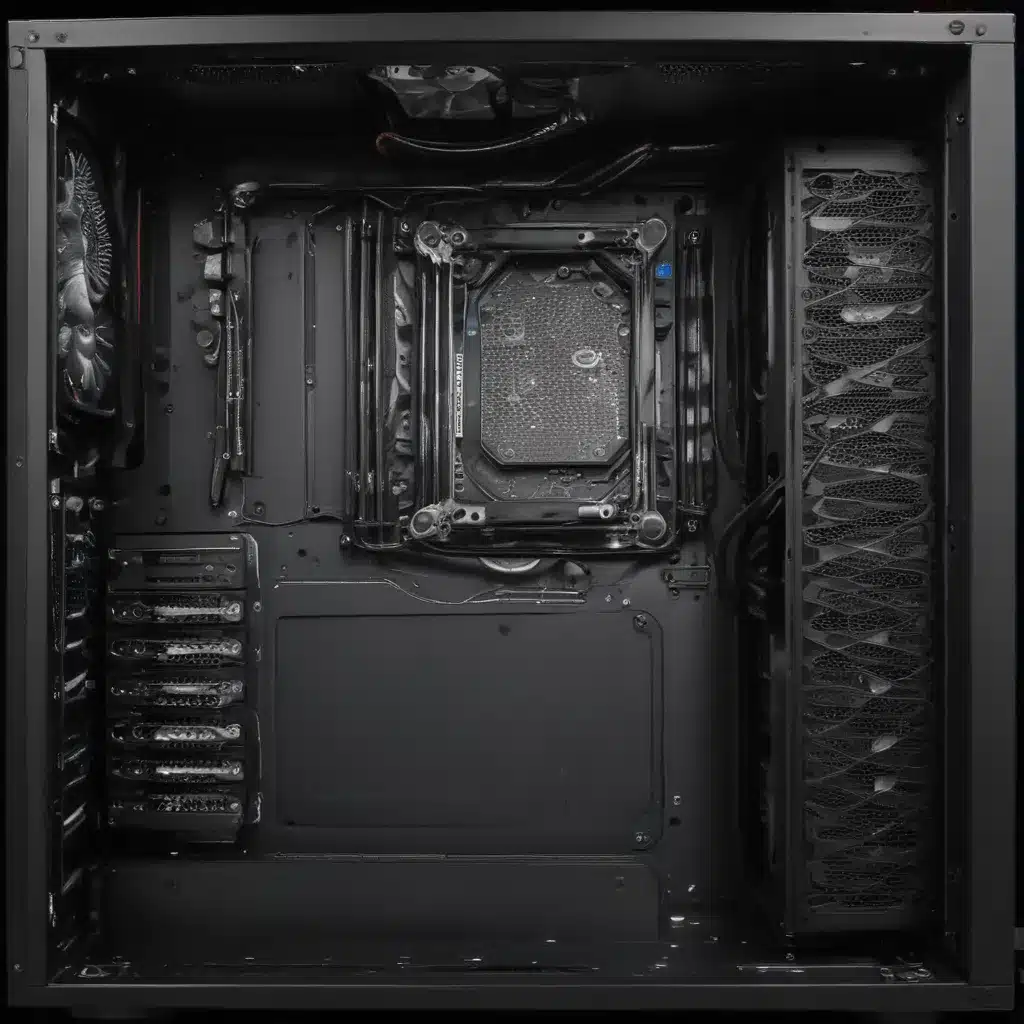As a self-proclaimed PC building enthusiast, I’ve spent countless hours scouring forums, blogs, and tech websites, searching for the holy grail of PC performance. And let me tell you, the journey has been equal parts exhilarating and frustrating.
The Power of Custom Building
When it comes to building your own PC, the possibilities are truly endless. Gone are the days of being shackled to a pre-built machine, with its often subpar components and restrictive upgrade paths. No, with a custom-built PC, you’re the master of your own destiny. You get to hand-pick every single component, from the lightning-fast CPU to the state-of-the-art graphics card, ensuring that your machine is tailored to your specific needs and desires.
Unlocking Your PC’s True Potential
But custom building isn’t just about choosing the right parts – it’s about unlocking your PC’s true potential. And that’s where things can get a bit tricky. You see, there’s a common misconception that simply cranking your power settings to “High Performance” or “Ultimate Power” will give you an instant boost in gaming performance. Well, let me be the bearer of bad news: that’s simply not the case. [1]
In fact, doing so can actually be detrimental to your system’s overall health and efficiency. As the folks over at Dell [2] explained, these power modes are designed for workstations and servers that need to run at maximum capacity 24/7. For gaming rigs, they’re little more than a power-hungry, heat-generating nightmare.
The Balanced Approach
Instead, the experts recommend sticking to the good ol’ “Balanced” power mode. This allows your CPU to downscale its performance when you’re not actively gaming, reducing power consumption and heat output. And when you do fire up that latest blockbuster title, your system will quickly ramp up to meet the demand, without any noticeable lag or stutter.
As the wise folks at AMD [2] have said, “the micro-stutter you’re getting is not going to be a direct result of balanced power plan.” In other words, there are a multitude of factors that can contribute to those pesky performance hiccups, from driver issues to hardware conflicts. Blindly throwing power settings at the problem is like trying to put out a raging fire with a water gun – it might make you feel better, but it’s not going to solve the root issue.
Optimizing Your System
So, what’s a custom PC builder to do? Well, the good news is that there are plenty of other ways to maximize the performance of your custom-built rig, without resorting to power plan trickery.
Graphic Settings and Drivers
For starters, make sure you’re keeping your graphics card drivers up-to-date. [3] These regular updates not only fix bugs and improve stability, but they often include optimizations that can give you a tangible boost in framerates.
Additionally, take the time to tweak your in-game graphic settings. As the folks at Dell [3] have pointed out, features like anti-aliasing, shadow quality, and resolution scaling can have a significant impact on your system’s performance. By finding the sweet spot between visual fidelity and frame rate, you can unlock that extra bit of oomph your games have been craving.
Overclocking and Cooling
If you’re feeling particularly adventurous, you could also consider overclocking your CPU or graphics card. [8] Now, I know what you’re thinking – “Isn’t overclocking dangerous and complicated?” Well, not necessarily. While it does require a bit of research and caution, many modern systems come with built-in safeguards and user-friendly tools that make the process relatively straightforward.
Of course, the key to successful overclocking lies in proper cooling. [3] After all, you’re essentially pushing your components beyond their factory-set limits, which means they’re going to generate a lot more heat. Investing in a high-quality CPU cooler and ensuring your case has ample airflow can make all the difference in keeping those temperatures in check.
Storage and Memory Upgrades
But wait, there’s more! If you really want to take your custom PC to the next level, consider upgrading your storage and memory. [3] Swapping out that old, sluggish hard drive for a lightning-fast SSD can dramatically reduce your game’s loading times, while adding more RAM can improve overall system responsiveness and multitasking capabilities.
Conclusion
At the end of the day, building a custom PC is all about finding the perfect balance between power, performance, and efficiency. By eschewing those high-power modes in favor of a more nuanced approach, you can unlock your system’s true potential without sacrificing its longevity or your peace of mind.
So, if you’re ready to take your gaming experience to new heights, roll up your sleeves and start exploring the world of custom PC building. The journey may be long and winding, but the destination – a masterfully crafted, lightning-fast machine that’s uniquely your own – is well worth the effort.
[1] https://www.reddit.com/r/buildapc/comments/owf0vq/there_is_no_need_for_a_gaming_computer_to_run/
[2] https://www.dell.com/support/kbdoc/en-us/000123108/maximizing-your-gaming-performance
[3] https://www.reddit.com/r/IndianGaming/comments/nkk5k2/i_made_a_pc_optimization_guide_for_constant_fps/
[4] https://askubuntu.com/questions/604720/setting-to-high-performance
[5] https://www.tenforums.com/tutorials/110372-restore-missing-default-power-plans-windows-10-a.html
[6] https://www.apple.com/batteries/maximizing-performance/
[7] https://ironsidecomputers.com/
[8] https://www.intel.com/content/www/us/en/gaming/overclocking-intel-processors.html













